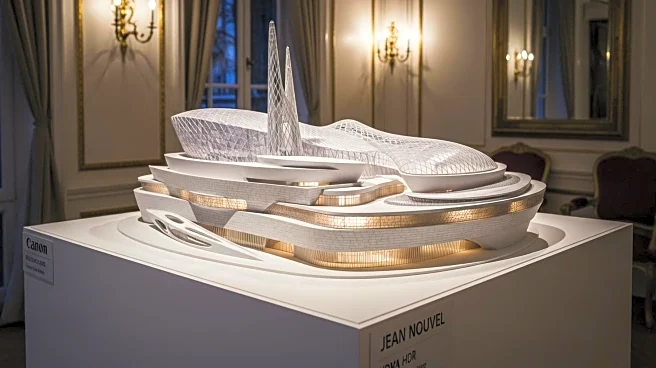What is the story about?
What's Happening?
The Fondation Cartier pour l’Art Contemporain in Paris is launching its new flagship museum, designed by architect Jean Nouvel. Located opposite the Musée du Louvre, the museum is housed in a historic building that has been completely renovated. The interior features five mobile steel platforms, allowing for flexible art displays across various levels. This ambitious project preserves the building's 19th-century facade while meeting modern safety and accessibility standards. The museum aims to be a dynamic space for contemporary art, with no fixed walls, floors, or ceilings, emphasizing adaptability and openness.
Why It's Important?
The opening of the new Fondation Cartier museum represents a significant development in the art world, offering a unique space for contemporary art exhibitions. The innovative design by Jean Nouvel sets a new standard for museum architecture, potentially influencing future projects globally. This flexibility allows for diverse programming, accommodating various art forms and performances. The museum's location near the Louvre enhances Paris's cultural landscape, attracting art enthusiasts and tourists, which could boost local businesses and the economy. The project underscores the importance of preserving historical architecture while integrating modern design.
What's Next?
The museum's inaugural exhibition, 'Exposition Générale,' will showcase works from the Fondation Cartier's collection, featuring over 100 artists. Future programming includes a solo show by Ghanaian artist Ibrahim Mahama and projects by Wu Tsang and Olivier Saillard. The museum plans to host a wide range of exhibitions and performances, including visual arts, live performances, and scientific programming. This diverse approach aims to engage a broad audience and establish the museum as a leading venue for contemporary art in Paris.
Beyond the Headlines
The Fondation Cartier's new museum highlights the evolving role of art institutions in society, emphasizing adaptability and inclusivity. The design challenges traditional museum structures, offering a space that can transform to meet artists' needs. This approach may inspire other institutions to reconsider their architectural and programming strategies, fostering innovation in the art world. The museum's commitment to diverse programming reflects broader cultural shifts towards interdisciplinary and cross-cultural collaborations.
AI Generated Content
Do you find this article useful?














